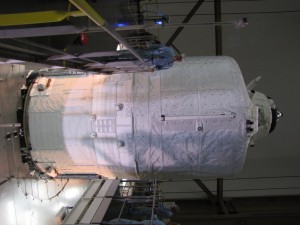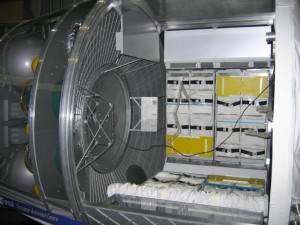Diary from a space project – Monday, 12 March 2012
Key milestones in launch campaign
17 Jan — Joint Operations Readiness Review — done
1 Feb — Final Acceptance Review — done
3 Feb — Operations Readiness Review — done
16 Feb — Stage Operations Readiness — done
19 Mar — Launch Readiness Review (LRR)
23 Mar — Launch — targeted
28 Mar — Docking to the ISS — planned
And then… just to be complete: ATV-4 Launch minus < 1 year !!
We’re less than two weeks to launch! You’d think that we would be twiddling our thumbs with this unexpected two-week launch delay (from 9 to 23 March), but — believe me — that is not the case.
Apart from the activities in Kourou (remove fairing, open the hatch, solve the issue with the cargo fixation, reinspect, close the hatch, check that all is OK and put back the fairing…) the rest of us on the ATV team are working hard with the preparations for actual operations.
Many people greet me by saying: “Now you can rest,” or “After launch, you can take a break” — completely forgetting that launch is not the end of the process. In fact, it is only the beginning! We have a six-month stay in orbit, which eliminates the summer. In parallel, testing for ATV-4 (Yes, ATV-4 already!) is due to start shortly and shipping to Kouoru will take place before ATV-3 has re-entered, so we have plenty to ‘keep us off the streets.’
But first things first: We need to have our operations procedures in place so that we know exactly who does what when we ‘recover’ our ATV in orbit. For that reason, the ESTEC engineering team is now busy with the Astrium team in Les Mureaux and Bremen and with the ESA/CNES mission operations team in Toulouse, putting the finishing touches on the procedures.
There is a constant stream of teleconferences in which the myriad of details are ironed out; the extra time of the launch delay gives us some space to solve a few more issues in a better way (real fixes instead of workarounds), so some of the procedures we had in place before the delay have to be updated. This is part of normal work.
A short recap of what ATV actually looks like might be in order…
Here’s the complete ATV as it looked a couple of days ago; the image is tilted to better show how it looks in orbit. It moves in this direction:
–>
And the main engines are, as usual, at the rear (to the left in the image above).
Now, here’s what the view above actually corresponds to, if you were to cut away part of the structure:
<– direction toward Ariane rocket during launch
This rear part is what we call the ‘spacecraft’, or S/C. It has the engines, 8 fuel tanks, the avionics bay and then Russian fuel tanks (in green – with the He tanks in yellow). At this end, we also have the three water tanks (only 1 is filled for ATV-3) plus the air tank and the two O2 tanks; the crew cannot directly access these tanks.
This is the ICC or the ‘Integrated Cargo Carrier’; this area is pressurised, and the crew enters from this direction:
–>
via the hatch. Cargo is stored on the shelves, while the water and gas panels are at the left-most end in the picture; the crew can get no further than here.
Cutaway view of Integrated Cargo carrier (ICC) – view towards the hatch
Toward the Russian segment of the ISS –>
ATV-3 carries 8 cargo racks (the maximum).
In case you are wondering, these pictures were taken in Cologne, at ESA’s European Astronaut Centre.
— Charlotte





 Automated Transfer Vehicle page
Automated Transfer Vehicle page ATV blog archive
ATV blog archive
 NASA Orion page
NASA Orion page NASA Artemis
NASA Artemis Airbus Orion page
Airbus Orion page
Discussion: no comments